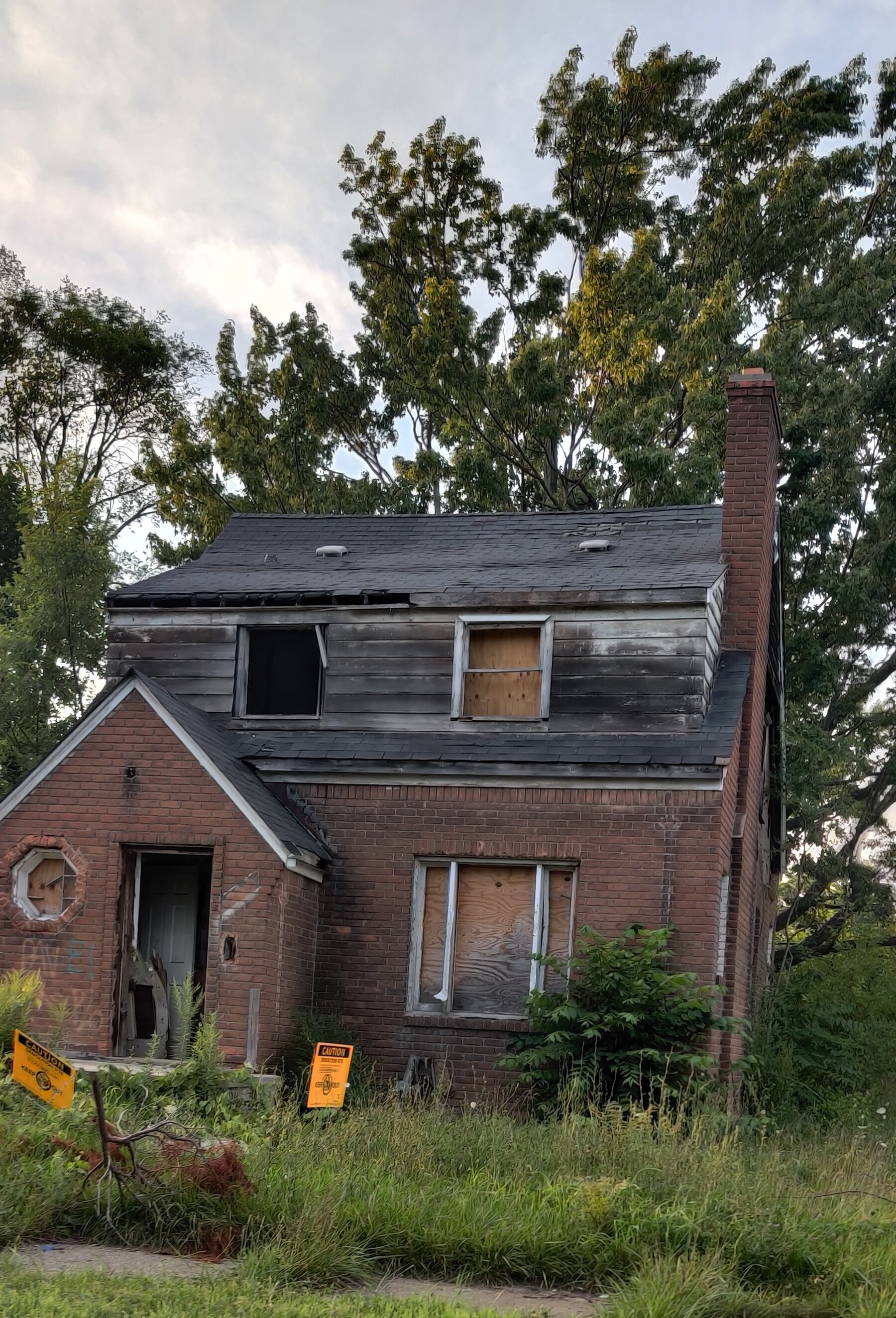The Vicious Cycle of Detroit’s Burnt Houses
Detroit has a long and complicated history with blight. Many neighborhoods are filled with houses that were set on fire ages ago and are still standing today. This causes many issues for the city and the residents.
Story and Photos by Tamjid Islam
There were once houses full of livelihood, places where kids called them homes. The smiles, the laughter and the sites where celebrations took place are now reduced to ashes. This is the truth of thousands of houses in Detroit.
The city of Detroit’s abandoned neighborhoods is a topic not only recognized nationally but also internationally. How did a blooming city with such a rich history collapse into abandonment in many neighborhoods? The reasons are long and complicated.
“The origin can be directly traced back to the long-term disinvestment, structural racism and a lot of the discriminatory practices that we have seen happen across the country. All that has occurred in Detroit,” says Kat Stafford, a national investigative writer and a global investigations correspondent at The Associated Press. “The mortgage crisis in 2008, that just definitely accelerated a lot of blight and abandonment that you see in the city of Detroit.”
In addition to the mortgage crisis, the city’s ability to extinguish fires is another reason behind Detroit’s many abandoned homes. According to Steve Neavling, an investigative journalist in Detroit, then-Mayor Dave Bing reduced the fire department’s budget by 20% in the summer of 2012. The reduced budget caused many issues such as shutting down a third of the fire companies, Neavling says. This had a devastating effect on the city’s ability to extinguish fires. “When houses are destroyed by fire, they are often left standing which increases blight, drives down property values, increases insurance rates and prompts residents to move,” Neavling wrote in a 2016 Motor City Muckraker article.
When these houses are left, it causes many problems for individuals and the community. Detrimental effects include the reduction of home prices in the surrounding area due to blight. Residents may also relocate, leaving many local businesses to close as a result of insufficient customers. The problems do not stop there as the government is unable to collect taxes from a blighted property, and the surrounding houses are likely to have reduced taxes, causing more problems for the city as a whole.
Growing up in these neighborhoods can also have negative effects on an individual. Qing Wai Wong of Public Health Post writes that a neighborhood full of blight causes “higher rates of mental distress, chronic illnesses, sexually transmitted diseases and unhealthy habits.”
As a native of Detroit, Stafford describes her experience with blight as “heartbreaking.”
“You drive around these neighborhoods, and you see the houses which your friends used to live in, and they are abandoned, or in many cases, the homes aren’t even there anymore,” she says.
To understand how a person feels while walking the streets of a blighted Detroit neighborhood, I took my classmate, Nasim Ahmed, for a short trip. We decided to visit the neighborhood with the ZIP code 48205. This location had the most fires between the years 2012 and 2015, according to Neavling.
A house in Detroit’s 48205 ZIP code with trees growing from all sides on July 25, 2021.
Although Nasim has been living in Detroit for about six years, he has never gone into this particular neighborhood to view the devastating condition. From the moment we entered, we saw something like nothing before. We could feel the emptiness in the area. The hour we were there, we saw only a few people and barely any houses. On some streets, the houses were not only burnt but also abandoned without a caretaker.
After this short view of this part of Detroit, Nasim described the experience as “terrifying.”
Nasim Ahmed stands in front of a burnt house in Detroit July 26, 2021.
“I feel sad for my city, if you look at downtown it's a different story,” he says. He wishes he had the power to do something to help with the devastating condition of some of these neighborhoods.
As many residents continue to confront the complexities of living in blighted neighborhoods, some citizens are exploring ways to improve their communities. Stafford believes that one way to help is to be engaged, talk to those in charge and work with the decision-makers that directly impact you. “Don’t be afraid to use your voice, your experiences to guide you in learning about the types of things you are passionate about or the things you think needs to be fixed,” she says.
View of Downtown Detroit on July 27, 2021.
It’s not ideal for a city to be developing only in one section while the other parts are left unattended. “In order for Detroit to fully revitalize, that energy and effort needs to be paid attention to (by) the city as a whole and not just specific communities” such as downtown, Stafford says.





